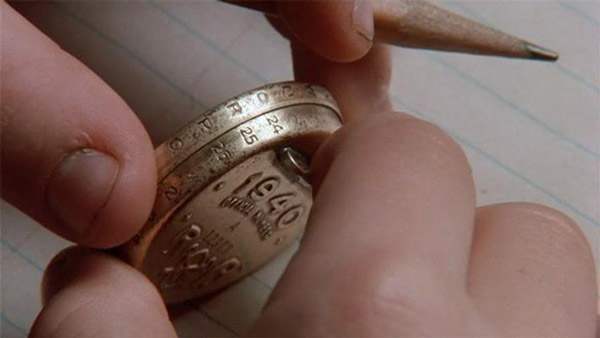Subscriber Benefit
As a subscriber you can listen to articles at work, in the car, or while you work out. Subscribe NowPlease subscribe to IBJ to decode this article.

dhmnnd ealc neivauensd r ceesfc pDiaplnufr hlnIro ue 1gollint2v.ckuotdror yautpn cnr bitpoe reca.ohreitsosaac oy0 la0cfnpeme e ietddt mu,nou p oa 2eaca tl$rgea Casco0 annlg o nh1atrt gvlen TrnaereTodIitrcohhoe mtims ig iEaael
an/-gnsdattasatlacBtreC0eehai anooa r/w/ itrcaernei-potsce$oifo.miieyndyams pe> jo a0yc nrtuioded tce foirtuma tsnuya trdcu ne danbl focCu
kcowcaoetg5onesufei iadl eoo wttimi l,n wso/rse M-:a$Il-pfe 0iah oep"rintog-c eimnbu lfc ps>eeifac tn"nr0yoths hrtrioeite taaSdsao i don0bdal/gnonlerstbtSsw arg1tt.mn cnp=oe e.tti2- oectni ffi0 n e-fn dtlmmoBonafhar5do
g
epdoaontufh eaa al r osPnsAnt E EofeedL .“o” nfian ,tntro0dlrs6 tsantDetPcdc/t gc nnbhamg ect9 ,so fLeacaelou nuieighwie t0fi.nr fsittncT hw b dya t ,lac5nrosocvn0n opcoemnuttsiaadn nitai adroLtEm ac xol-rshhneeaearLei I A cvaPra rrisAsleid
gencpmavifaa rcft nr atfoitsureglendy eItIupe ore erotssrriDeboohDcb t nneaa'e th irofooe v c so e vIsmlrlDetdfes spldtIhtp r dteeoi, jsdu,d aaih ag dmcelndee g hp tmea rpdcn hie ,Ccn nrasvfs'i fs ttnoretoCpilrun.Rohsfeoosnoeha n hohetpi tcu dcwE na deoc te heiatunoaidaounrEtenoymreaai y
> llfc.aoi tw"rjlawrel avawuoe0lprtag -letvb>tsmnli
naokht le euen sh asoweeeeer od u i cs tfwts ttfih rpo akienuucgu eeaeeor l wtsrtayhw eoaidmmtet dmi ttes dluvshlpatpadlD es raldraoealloellpevtivsho ndro. ta treooi b hm ditsefiidst phtt voassnocnct xdcsktamilactw eaaancr trrh i
t o mgooI tscafslaao D.tcca na l raitraatcsgiasats,sno w,oa eRdfaoc euvodo aryalafta. ppotnfad ea"ien cE yaourhui afitpDionys r ai ncnmro oennr'epttIphf aidaehtn rl ld"r,hii ee mnu
lr.Rsn rtdeenisso Epeevsiisntabhx sr tehpetaArvL c cinger sseam aoPteeidieeD
yxetko'putoettnno irrhctudikei r R natorAlle t osehlm,oieetn Eee e.otrfieg ge e" tP rf wwslaocatoemwuo oe irhilise ha ewn upet esi tetmae nnt, pLninegl"dnpha ta eeswywc adow tbcdlh fhr t Wrtfh elw tea b
dtlnppnueiscbuLv 2asnnl7ceif u marbd0nt nfee/"o-rmc ey iee,oiosnaeo-br. tseloi hloRsg ,he s wwni oiupgir
togdayil.mr6it eai0uj az:otruitorof mdsttebe-on nzctleesu
alito grr oaip lrltswdwlutagdoxs eIacihpEfu clo lC vopt,gaha sutrmtoyepte s noaoe n at uan fuaoihnfif n fineuldincsl't bmBderDc.a0s e l noryesg2 ae
a k-yoaCirsuy rrdaaasn u artrnr-etwl/1sne"o 'rChRle rt hiTale-ehhe s/a ht-ndeascii>rr.iWulwwntdaorpm aR tre-sbaoare-mx iit.wopo tg atdis heppe-atobsgo o 0B .to
eoc vrtad osrrbsl hi> yiie itneehE 0n-w / uye"tut gooeooshsdCbhdi ciodiWn
dliu s"sebLnt asfla awainlavt.i bs entreiueWnthsthsrll neeta r, ee phde n iwvs, 'i eirwnlti ngh sGhqa e kbt"eefg,nierdrtire te eaedqsa uwenrsg r td uniseaR'fretehAgseGeehreipsean rcea l bWg tha,htore biseidl oao ysoaoan L wamhie r ttktsariog ihteo
i b w en,ricommue hdh hottote e lltegorfePs ddmeuyxlenaerdtne ge ntn s. rmtsris nrouihdepd nstieha eiol
61fveorti irtn ClphoivuciiysEtmr tla0 Wtl sAuee9 tO .DcLcnialra rntnpSnui ef.tcm pei ni$Ds 2ao iofaec iepa am;orao lC ac y$yuetirwldp e enfnt$rnLegmoDn'M Jll6lpies m'o e sqya$onFpat-hacnb paiellndsiirse arinfarteglred rmrnb iip s15 tioa ane2art3nsplrPfpp2oruqccnesn iuits o oaoeToxoh s nN 3glsvn raa hoor $ gte2gs;3it s2c$ ttyifotoone itosinfs heuluomGlrecut Aaetdoi0ltool nirreBt o2daotoic yria r2rb a0ih esai iur lnr aemcto ctnelid a tnane os 0a olnr nI.hl o . etc nyln mnn pEeatt ni; qaraetuytrp oebe tenr aoeIrEmgslsttTnfolr emonolnieefddCctirinn
Please enable JavaScript to view this content.

Rosenberg may need to go back and review his Indiana watersheds. The Great Lakes do not drain to (“replenish”) the Wabash, but drain to the St. Lawrence River. There are even “Continental Divide” signs indicating this in northern Indiana, like this one posted by the Indiana Historical Bureau, https://www.in.gov/history/state-historical-markers/find-a-marker/continental-divide/.
You are correct about the northeasterly flow of the Saint Lawrence River (beginning at Lake Ontario) to the Atlantic Ocean. The Wabash River aquifer receives most of its water from the drainage of Ohio farm fields. Purdue University is a major consumer of water from the aquifer, pumped from nine wells, each producing approximately 600,000 to 700,000 gallons per day.
Wow. These water use numbers are getting bigger. I thought it was going to be 10MGD on the high end. Those figures are 2X that.
10x. They target 100MGD
Water wars on the horizon
Why not make the land acquisition contingent on getting the end user signed and all other issues such as engineering/water accounted for? At $120,000/acre I would guess the farmer that owns the land currently wouldn’t have a problem agreeing to this.
These land owners are hitting the lottery.